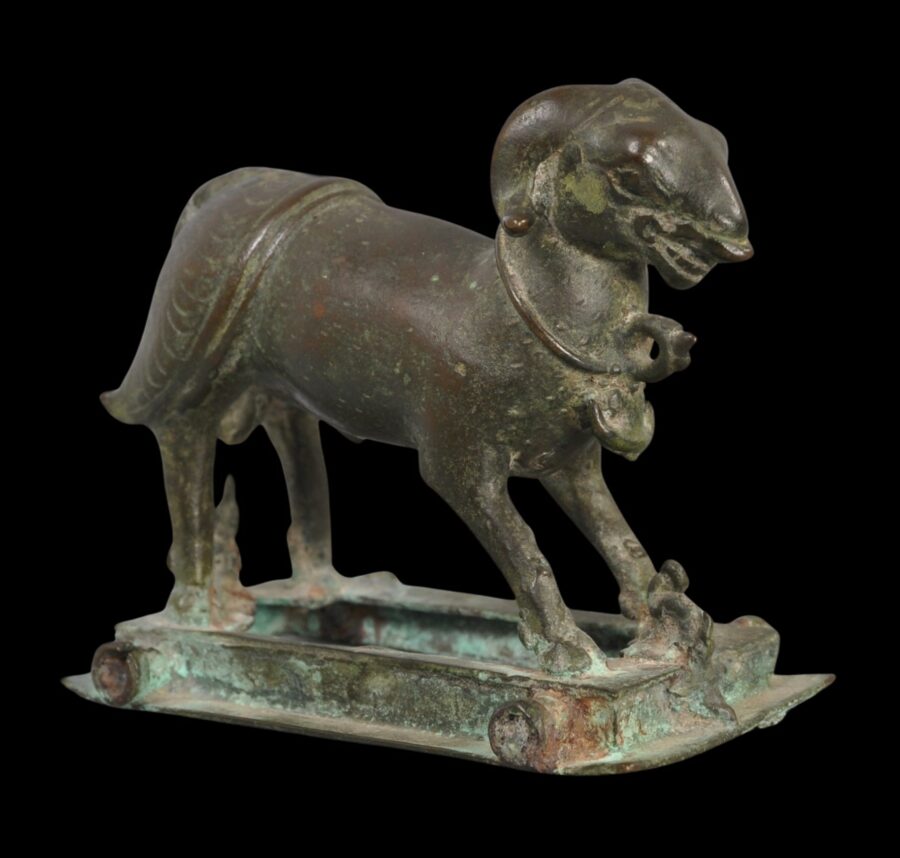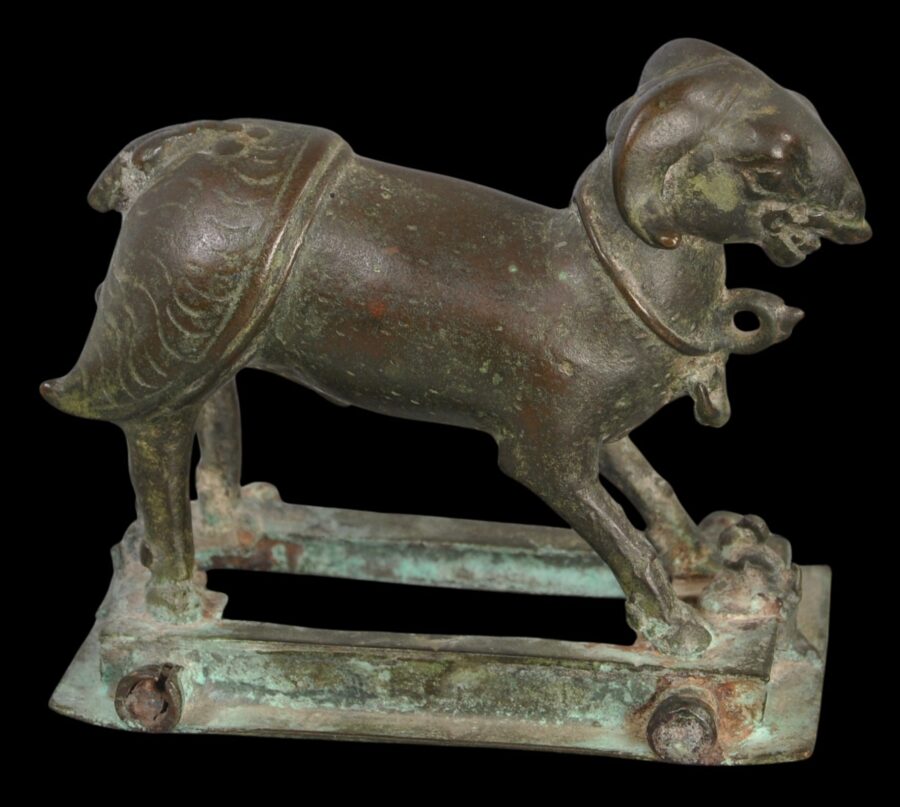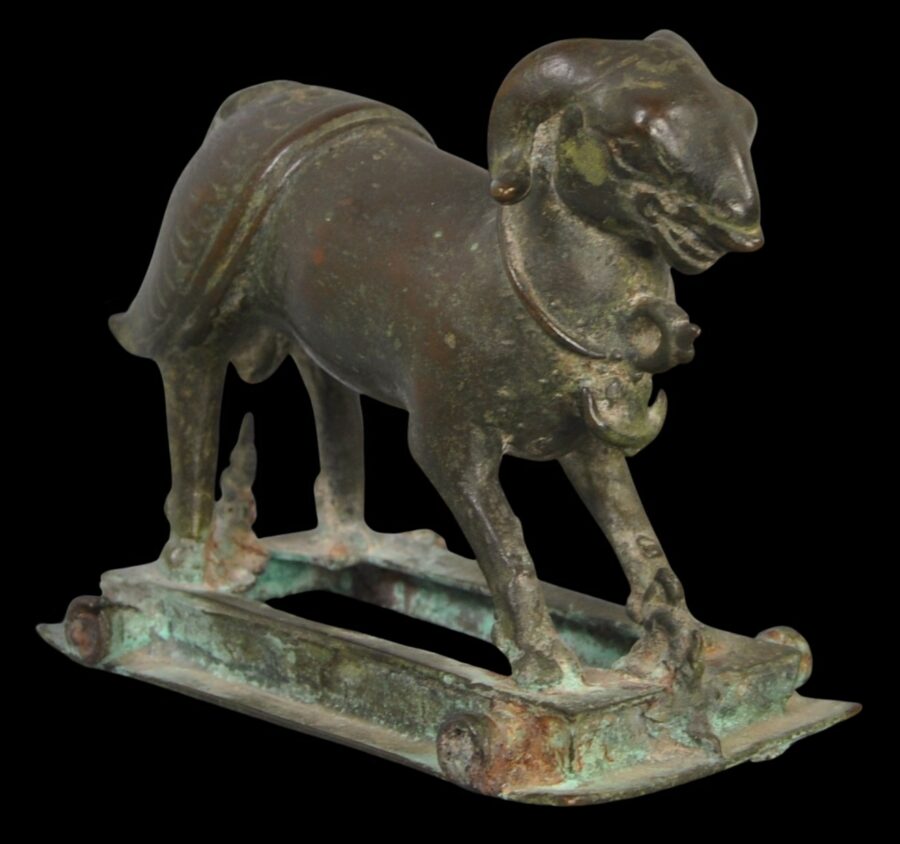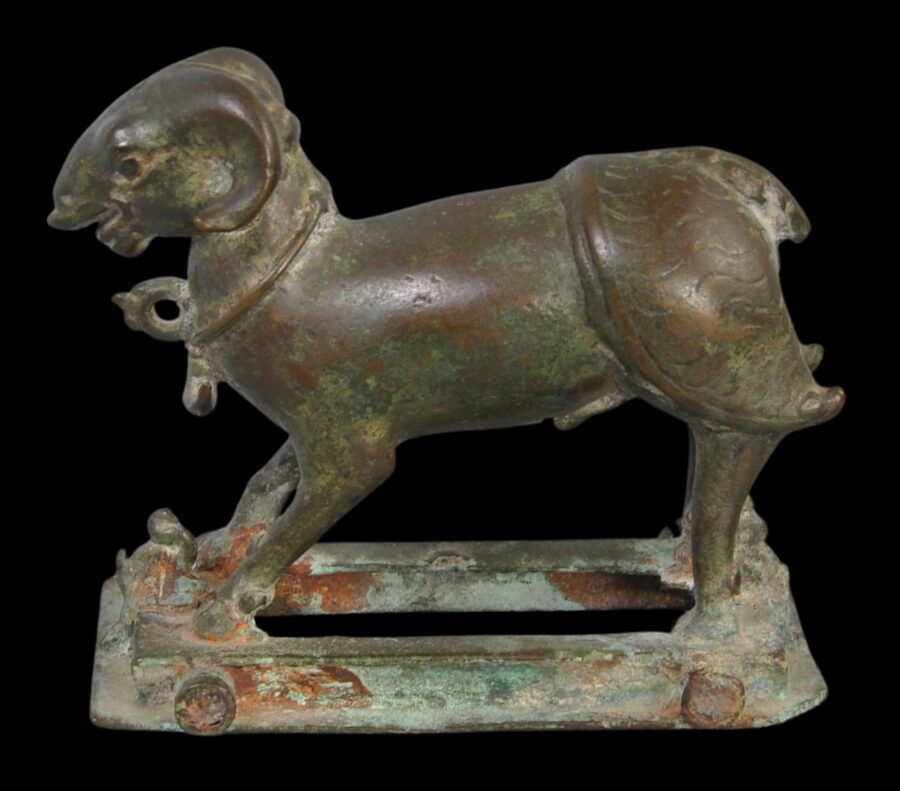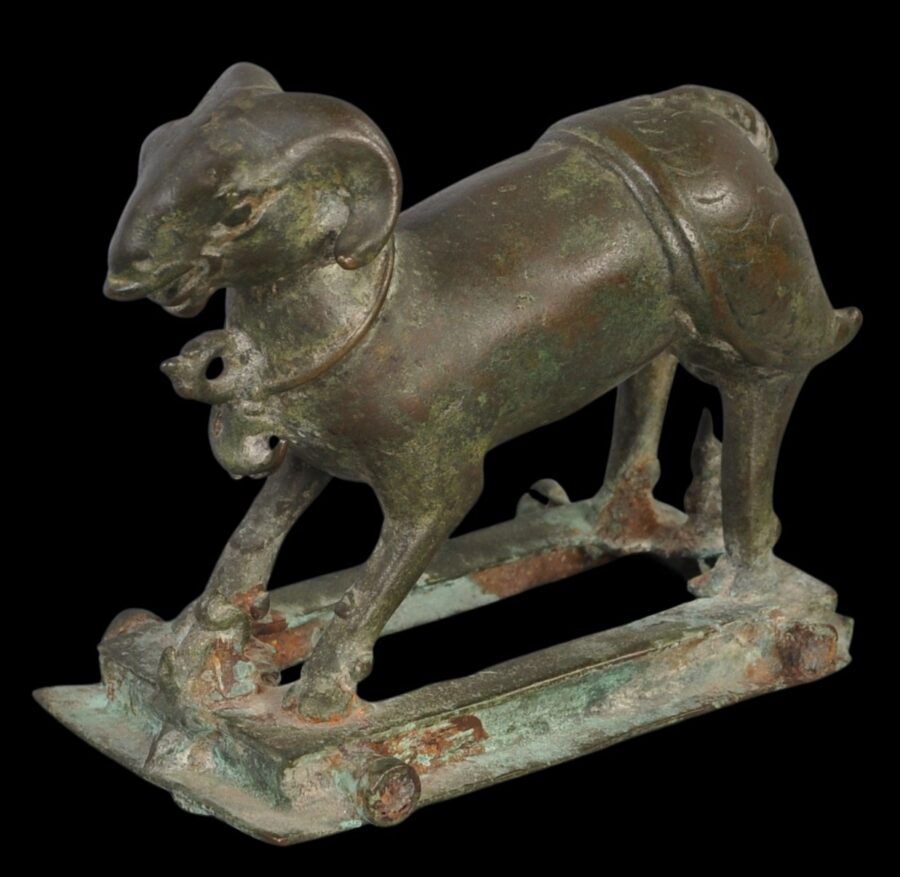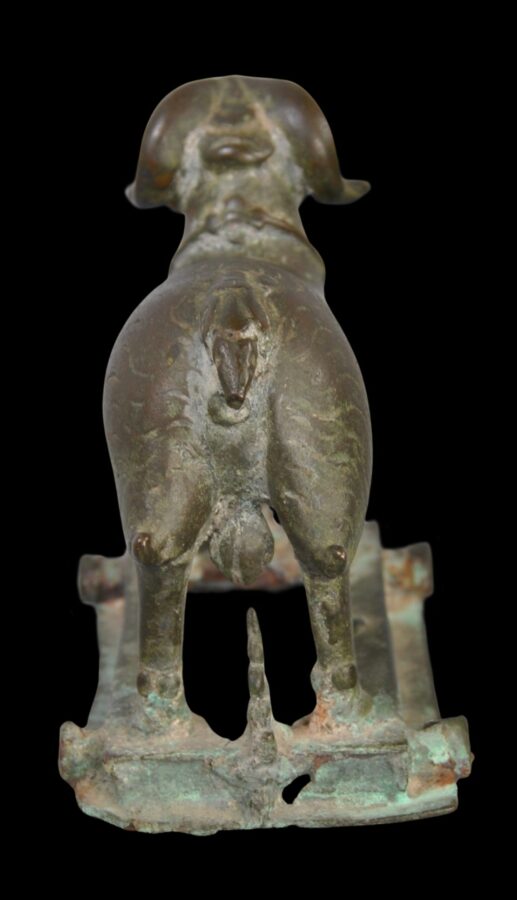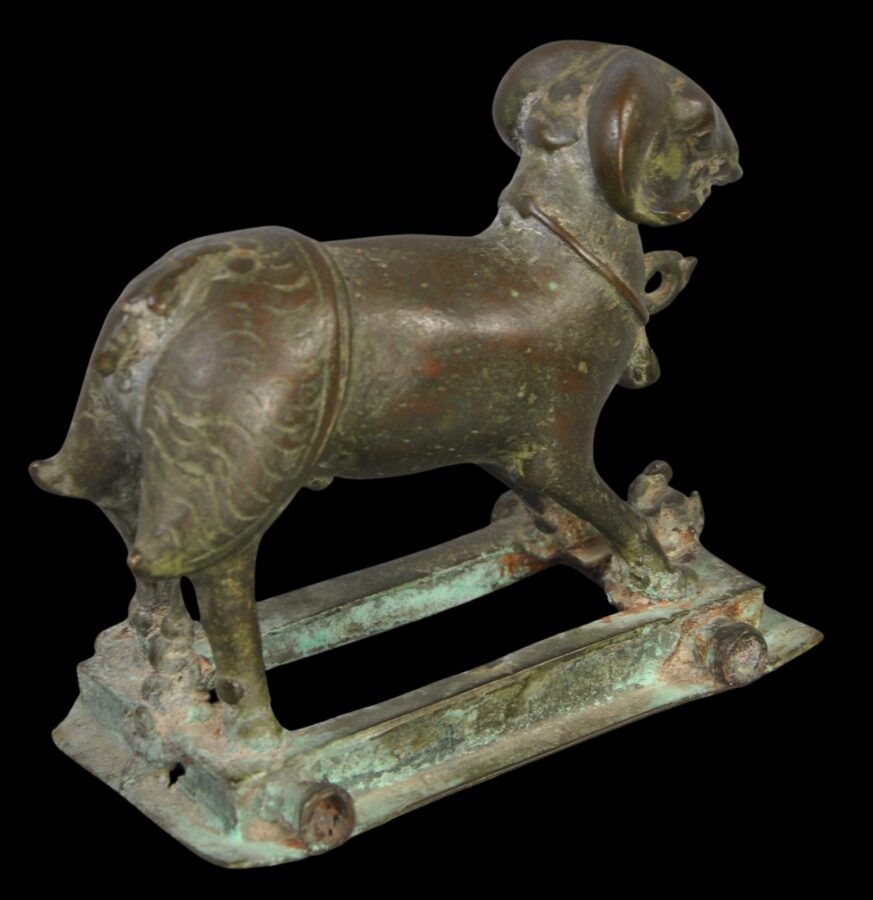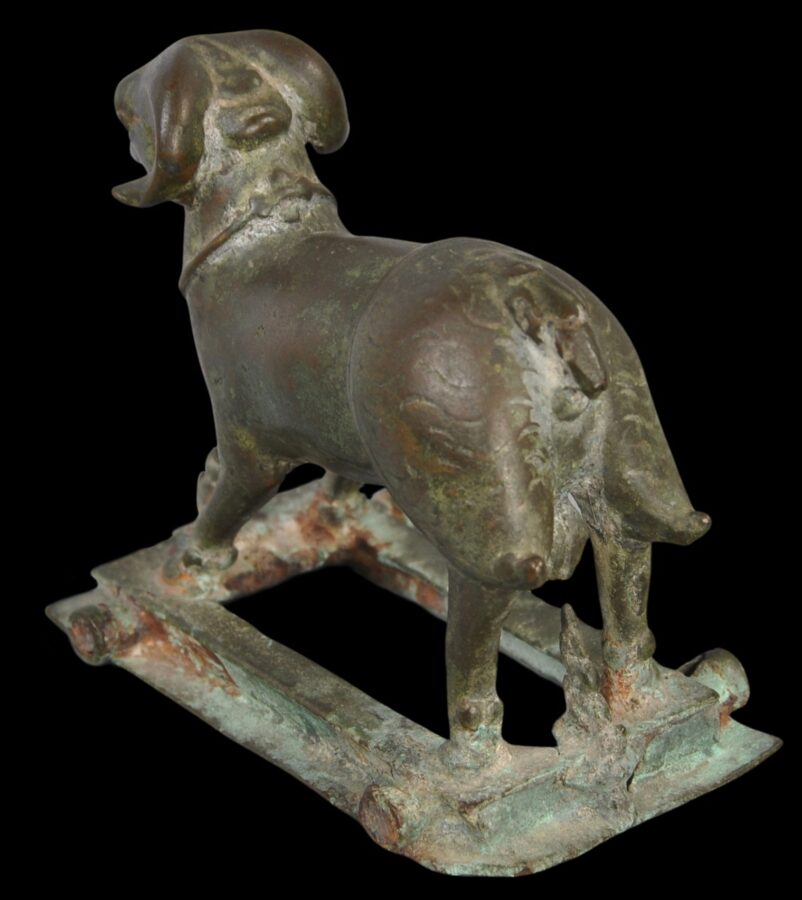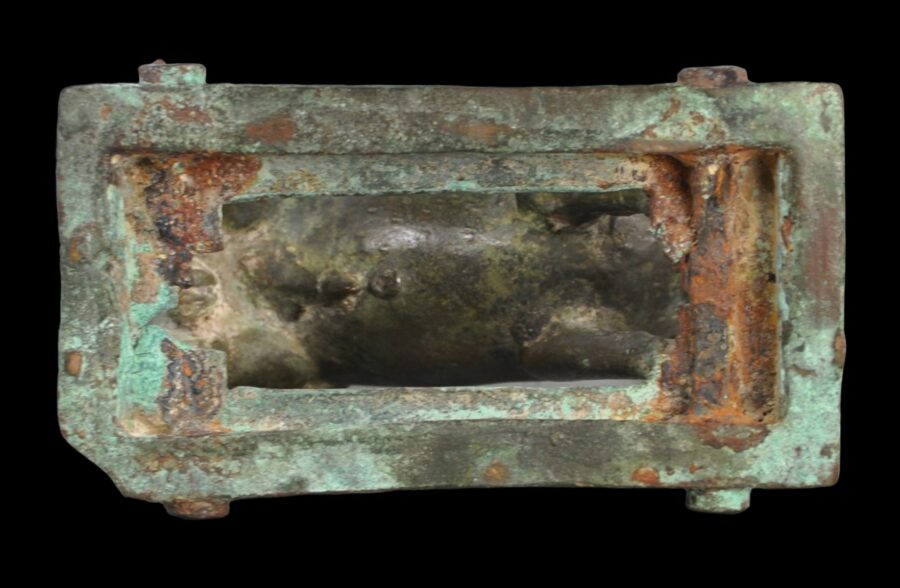Enquiry about object: 9574
East Java Majapahit Bronze Ram
East Java, Indonesia East Java Period, 13th-15th century
height: 9.5cm, length: 11.9cm, width: 5.8cm, weight: 428g
Provenance
UK art market
This model of a ram, cast in bronze using the lost wax process, is from the Majapahit kingdom that was centred on the island of Java from around the 13th to the early 16th centuries. The ram stands on a rectangular open-work platform cast with four shafts, probably to which wheels were attached, and a loop cast to the neck, to allow the ram to be pulled along. As a consequence, it is believed that rams and other animals so cast functioned as children’s toys.
Several such cast bronze rams are known (see Lunsingh Scheurleer & Klokke, 1988, p. 161, & Polak, 2023, p. 96-97, for two examples) and all follow a specific schema: for example most of the body is smooth and shorn of wool but the hind-quarters are thick with wool and engraved with swirls to denote a woolly texture. It is believed that this type of shearing rams was fashionable during the East Java Period (Lunsingh Scheurleer & Klokke, 1988, p. 161). The ram here also has been cast with a bell to the neck which flares to each side, in common with other known examples.
The example here has a superb glossy, dark grey-green patina. It is accompanied by a custom-made, perspex stand. It is an excellent, museum-worthy item.
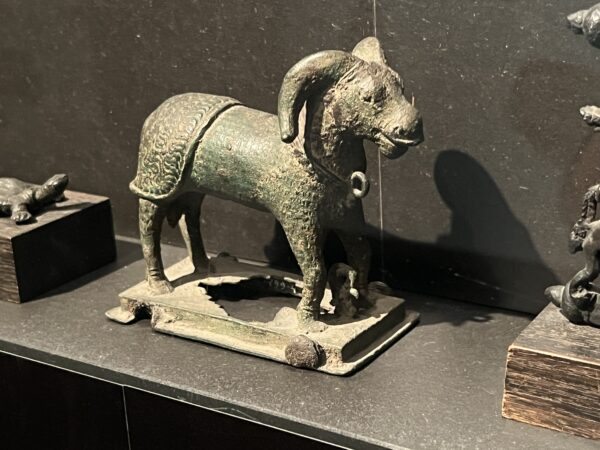
Above: A related example displayed in the Wereldmuseum (National Museum of Ethnology) in Leiden, the Netherlands.
References
van Lohuizen-de Leeuw, J.E., Indo-Javanese Metalwork, Linden-Museum Stuttgart, 1984.
Lunsingh Scheurleer, P., & M.J. Klokke, Ancient Indonesian Bronzes: A Catalogue of the Exhibition in the Rijksmuseum Amsterdam with a General Introduction, E.J. Brill, 1988.
Polak, J., Ancient Indonesian Silver of the Central and Eastern Javanese Periods 750-1550: A Small Collection, Documentation Centre for Ancient Indonesian Art, Amsterdam 2023.


